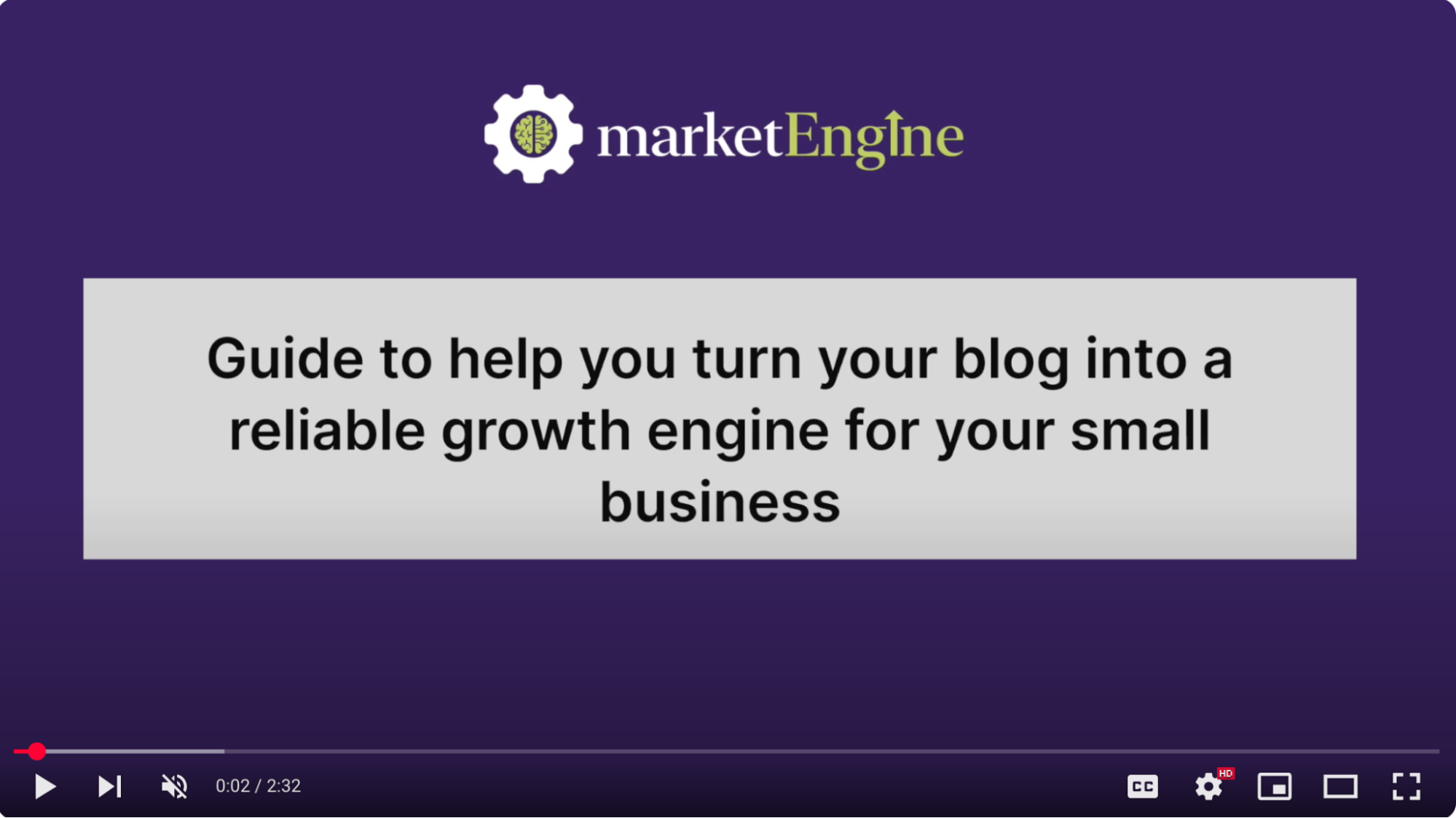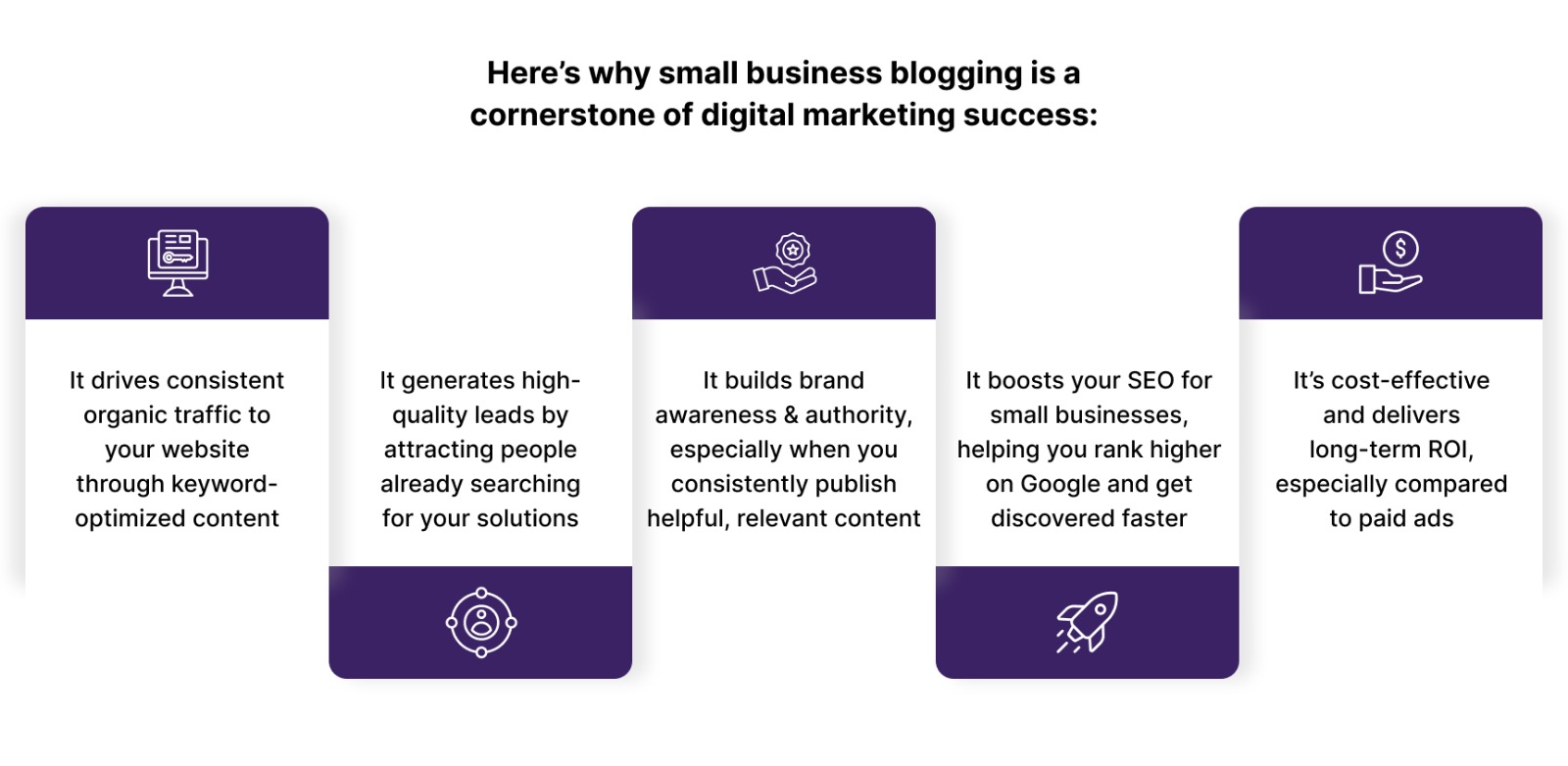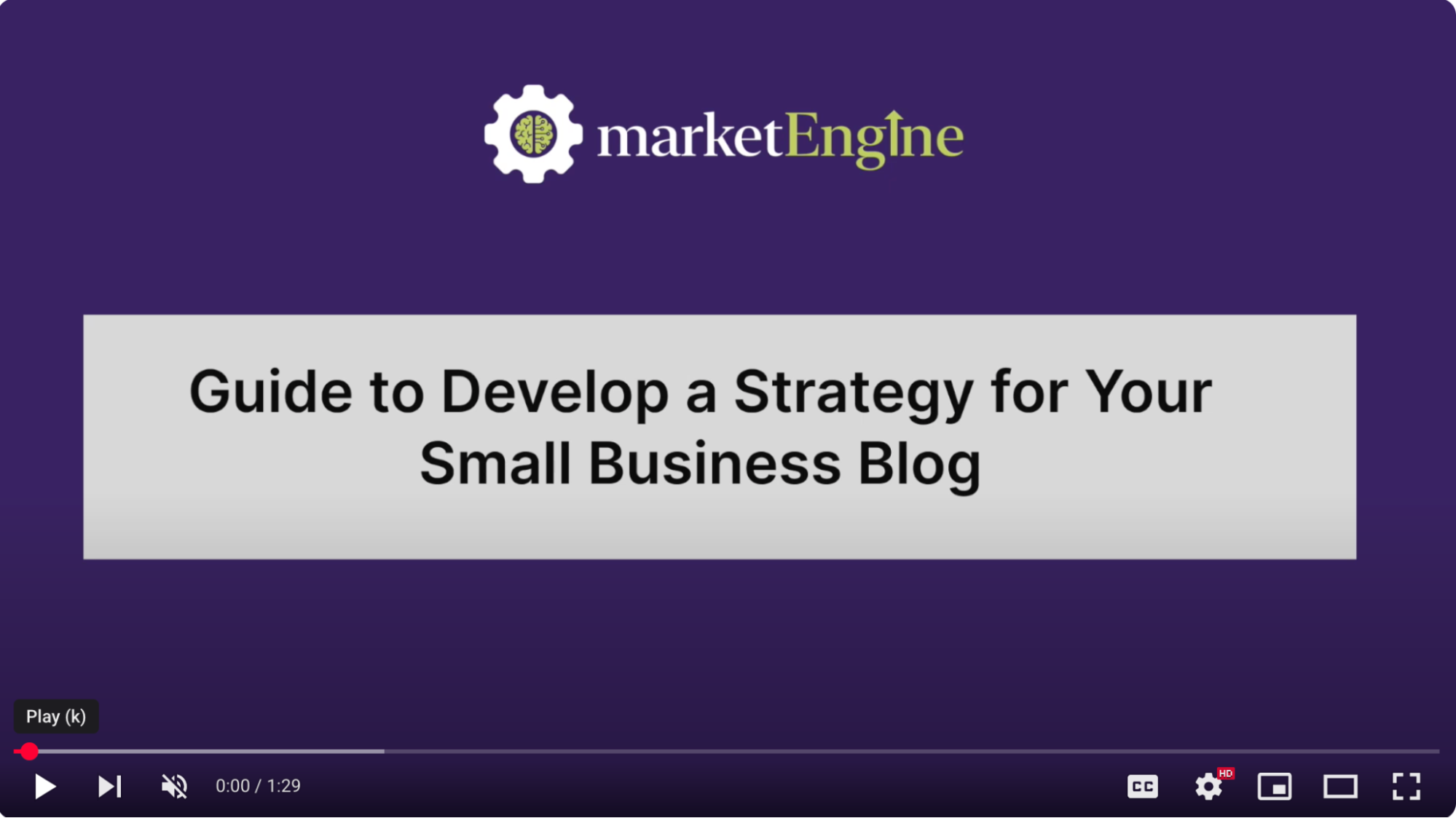Introduction: The role of small business blogging in SEO success

Did you know that 77% of internet users regularly read blogs, and blogs rank as the 5th most trusted source of online information? For small business owners, that’s a major opportunity. A well-executed small business blog isn’t just a content marketing tactic—it’s a powerful, cost-effective way to build authority, drive organic traffic, and convert readers into loyal customers.
But here’s the catch: small business blogging without a clear strategy can quickly lead to frustration and burnout. Random posts won’t bring results. You need structure, consistency, and the right SEO foundation.
In this guide, we’ll walk you through everything you need to launch and grow a successful blog that supports your business goals—especially if you're exploring affordable SEO services for small businesses. You’ll learn:
- Why the small business blog is one of your best marketing investments
- How to build a smart, results-driven blogging strategy
- Ways to choose blog topics that build authority in your niche
- The essential ingredients of a high-performing blog post
- How to optimize each blog for small business SEO
- Tips to maintain consistency and frequency without overwhelm
- How to track performance and measure real success

Whether you're just starting out or looking to improve what you’ve got, this guide will help you turn your blog into a reliable growth engine for your small business.
Why is small business blogging important?

With over 2 billion people shopping online in 2020 alone, it's clear that an online presence isn't optional—it's essential. The small business blog can be well planned and one of the most effective and affordable ways to drive traffic, build trust, and grow your customer base.

If you're exploring affordable SEO services for small businesses, blogging is a smart first step. It creates the foundation for all other marketing activities—email, social, SEO, and more.
Want to learn how to build a blog that gets results? Download our step-by-step guide to Digital Marketing for Small Businesses, packed with actionable tools, strategies, and tips to grow your organic traffic and increase sales.
How to develop a small business blogging strategy that delivers results

In today’s digital landscape, simply publishing well-written content isn’t enough. With evolving search engine algorithms, even the small business blogging which is the most SEO-friendly can struggle to rank without a strong content strategy.
Instead of stuffing keywords, focus on delivering real value. Small business blogging should aim to solve problems and answer the key questions your customers are searching for.

Here’s a strategic approach that aligns with both affordable SEO services for small businesses and sustainable content marketing:
- Choose Core Topics That Matter
Identify a few core themes relevant to your audience—topics you want your brand to be known for. These should reflect your expertise and customer pain points. - Create Topic Clusters
- Start with a pillar blog—a comprehensive post covering the core topic.
- Develop sub-topic blogs that dive deeper into related questions or problems.
- Interlink all posts to form a topic cluster, signaling authority to search engines.
This structure gives the small business blog both breadth and depth, helping you rank higher, attract more organic traffic, and convert visitors into leads.
Pillar pages for the small business blogging

- What is a Pillar Page?
A pillar page is the central hub of the small business blogging strategy. It provides a comprehensive overview of a key topic you want to be known for and links to related subtopic blogs that explore specific aspects in more detail. Think of it as the foundation that supports a topic cluster, much like pillars support a building.
Pillar pages are typically long-form and rich in value—designed to help users solve a problem or understand a topic thoroughly, while also connecting them to deeper content. These pages are critical in building topic authority and improving your affordable small business SEO .To know more about Pillar Pages, you can check out one of our webinars here. - How to Create a Pillar Page?
To build a successful pillar page:- Choose a Core Topic – Identify a topic aligned with your business and what your audience cares about.
- Outline Key Subtopics – Select 5–7 essential subtopics that support and expand the core idea.
- Interlink Content– Write the main pillar blog and link it to detailed, small business blogging posts on each subtopic.

Using pillar pages strengthens your content structure, boosts authority, and enhances visibility through affordable SEO services for small businesses.
How to select pillar page topics for effective blogging services for small business

At StartupWind, we aim to support small business and startup entrepreneurs. That’s why topics like Digital Marketing for Small Businesses and Startups, Fundraising for Startups, Market Research for Small Businesses, and Business Planning for Small Businesses are perfect candidates for our pillar pages.
Before writing a pillar page or a supporting small business blog, ask yourself:
- What’s the purpose of this blog?
- What problem does it solve for the reader?
- Why would someone read it—and return for more?
- How will it provide real value or insight?
These questions help clarify your message and ensure the small business blogging is targeted, useful, and engaging.
How to choose pillar topics for your small business blogging?

Focus on what the small business wants to be known for—topics that solve real problems for your audience and help you build authority. These topics will anchor your content strategy, boost organic traffic, and align with affordable SEO services for small businesses.
Let’s revisit Alton Brown’s small business blog, which covers comfort food topics like soups, brownies, chicken wings, and Thanksgiving turkey. Each of these is a core topic he aims to own through small business blogging, with dedicated pillar pages. For example, the Thanksgiving Turkey pillar page includes sub-topic blogs such as Deep Fried Turkey, Honey Brined Smoked Turkey, and more. This structured approach not only enhances user experience but also supports affordable SEO services for small businesses by building topic authority and improving search engine visibility.
Power your marketing engine with strategic small business blogging

Begin by listing the core topics your small business blog should focus on—these are the areas where you want to build authority and offer consistent value to your audience.
- Structure of a Pillar Page for Small Business Blogging services
To create an effective pillar page, structure it with:- Introduction: Explain why the topic matters and what readers will gain.
- Unique Solution: Describe your distinct approach or insights.
- Subtopic Sections: Organize key subtopics clearly, each linking to a deeper small business blogging page.
- Conclusion: Reinforce how your content solves a real problem with a systematic approach.
This structure helps improve user experience and supports affordable small business SEO services by boosting topic relevance and internal linking.
- Identifying Subtopics for the Small Business Blog
Once your pillar page topics are defined, identify subtopics that need detailed exploration to provide actionable, in-depth insights. These become the small business blog articles that are standalone and linked from the main page, helping readers navigate content more easily and boosting your topical authority.

For example, StartupWind’s small business blog pillar page on Digital Marketing for Small Businesses is divided into key subtopics such as content marketing, email marketing, social media marketing, Small business SEO and more, each designed to support the small business blog and offer affordable SEO services for small businesses.
Content clusters for the small business blogging services

A strong content cluster includes a pillar page supported by multiple subtopic blogs, offering both breadth and depth on the topic the small business blog wants to own. This strategy builds topical authority while solving real problems for your audience. Effective small business blogging paired with affordable small businesses SEO services strengthens visibility and trust.
Optimizing your small business blogging for effective SEO

Once your content cluster is built, it's essential to optimize it for small business SEO to ensure search engines can discover and rank it.
- Title/Heading (H1) - Use a clear, keyword-rich H1 that reflects your blog’s topic and primary small business SEO keyword.
- Subheadings (H2) - Use H2 tags for subtopics to help search engines and readers understand blog structure.
- Bullets & Snippets - Use bullet points instead of long paragraphs to enhance readability and increase chances of being featured in search snippets.
- Meta Description - Write a concise summary that includes both the primary keyword and long-tail keywords related to the small business blogging topic.
- Keyword Strategy - Target 1–2 primary keywords per blog. Ensure they align with your topic and are naturally integrated throughout your content.
- Keyword Density - Maintain a natural keyword density (~1–2 keywords per 100 words). Avoid overuse, which may trigger penalties from search engines.
- Call to Action (CTA) - Place CTAs near the banner, within the introduction, and at the end of your blog. These could be links, downloadable resources, or service offers related to affordable SEO small business SEO services.
- Visual Content - Add images, banners, or videos to break up text and engage readers. This also improves SEO by lowering bounce rates and increasing dwell time.
- Alt Text - Include descriptive, keyword-rich alt text for all visuals. This improves both accessibility and SEO, helping your blog appear in image and video results.
Repurpose your existing small business blogging content for maximum ROI

Creating a pillar page and content cluster takes time, research, and revisions—but once it’s done, it becomes a valuable asset you can repurpose across multiple formats and channels. This approach not only strengthens your content strategy but also supports affordable small business SEO services.

This repurposing model is ideal for the small business blog, helping you amplify reach without creating everything from scratch.
Example:
- StartupWind's blog on Digital Marketing for Small Businesses led to several subtopics and a downloadable eBook.
- Alton Brown's Thanksgiving Turkey blog inspired how-to videos and supporting articles.
Build once, distribute smart—maximize visibility while keeping content creation cost-effective.
Stay consistent with your small business blogging schedule

Publishing fresh content weekly helps small business blogging gain authority and visibility. By consistently covering topics your audience cares about, you’ll boost traffic and improve rankings—especially when paired with affordable SEO services for small businesses.
Start by publishing a pillar page in week one, followed by subtopic blogs over the next several weeks to build a strong content cluster. This approach strengthens the small business blogging and helps search engines recognize your expertise.
The result? More readers, higher engagement, and increased conversions for your business.
Measuring the Success of Your Small Business Blogging Strategy

To improve your small business blogging efforts, you must measure them. Before publishing content, define key metrics and establish baseline performance. For the perfect small business blogging, focus on:
- Organic traffic growth
- Keyword rankings
- Click-through rates (CTR)
- Bounce rate and time on page
- Conversions (leads or sales)
After publishing, start tracking results within 2 weeks to assess traction. Tools like Google Search Console and Ubersuggest are essential for monitoring performance and refining your strategy.
Consistent tracking ensures your blog—and your affordable small business SEO services—deliver measurable ROI.
Mastering small business blogging for a lasting growth

Small business blogging is one of the most cost-effective ways to drive organic traffic and build long-term visibility. To create a successful small business blogging strategy:
- Identify relevant topics for your audience
- Build topic clusters with pillar pages and subtopics
- Publish high-quality, problem-solving content
- Optimize each post using affordable SEO services for small businesses
- Blog consistently—ideally, once a week
- Track key performance metrics regularly
This approach boosts your authority, attracts more readers, and ultimately drives customer engagement and sales.
A step-by-step guide to the blogging strategy for your small business
Learn how you can define an effective blogging strategy and write great blogs to drive organic traffic to your website!
Need help getting started?
Talk to our expert to learn how to align your blog strategy with your overall digital marketing goals and grow your small business organically.
FAQs
What are blogging services for small business, and how can they help my business?

Blogging services for small business help you create, publish, and optimize accurate content that drives traffic, builds authority, and converts readers into customers. Combined with affordable SEO services for small business, these blogs become a key growth engine for your brand.
How does small business blogging improve SEO and visibility?

Small business blogging, when paired with affordable SEO services for small business, improves your website’s search rankings by targeting relevant keywords, building topic authority, and driving organic traffic.
Can blogging services for small business fit my budget?

Yes. Affordable blogging services for small business focus on delivering agency-level content that aligns with your goals while keeping costs manageable. Using these services alongside affordable SEO services for small business maximizes ROI.
How often should I publish content for small business blogging?

Consistency is key. Publishing at least once a week helps your small business blogging strategy gain traction, build authority, and improve the results of affordable SEO services for small business.
What results can I expect from investing in blogging services for small business?

With strategic small business blogging and affordable SEO services for small business, you can expect higher organic traffic, improved search rankings, stronger brand authority, and more customer engagement.








